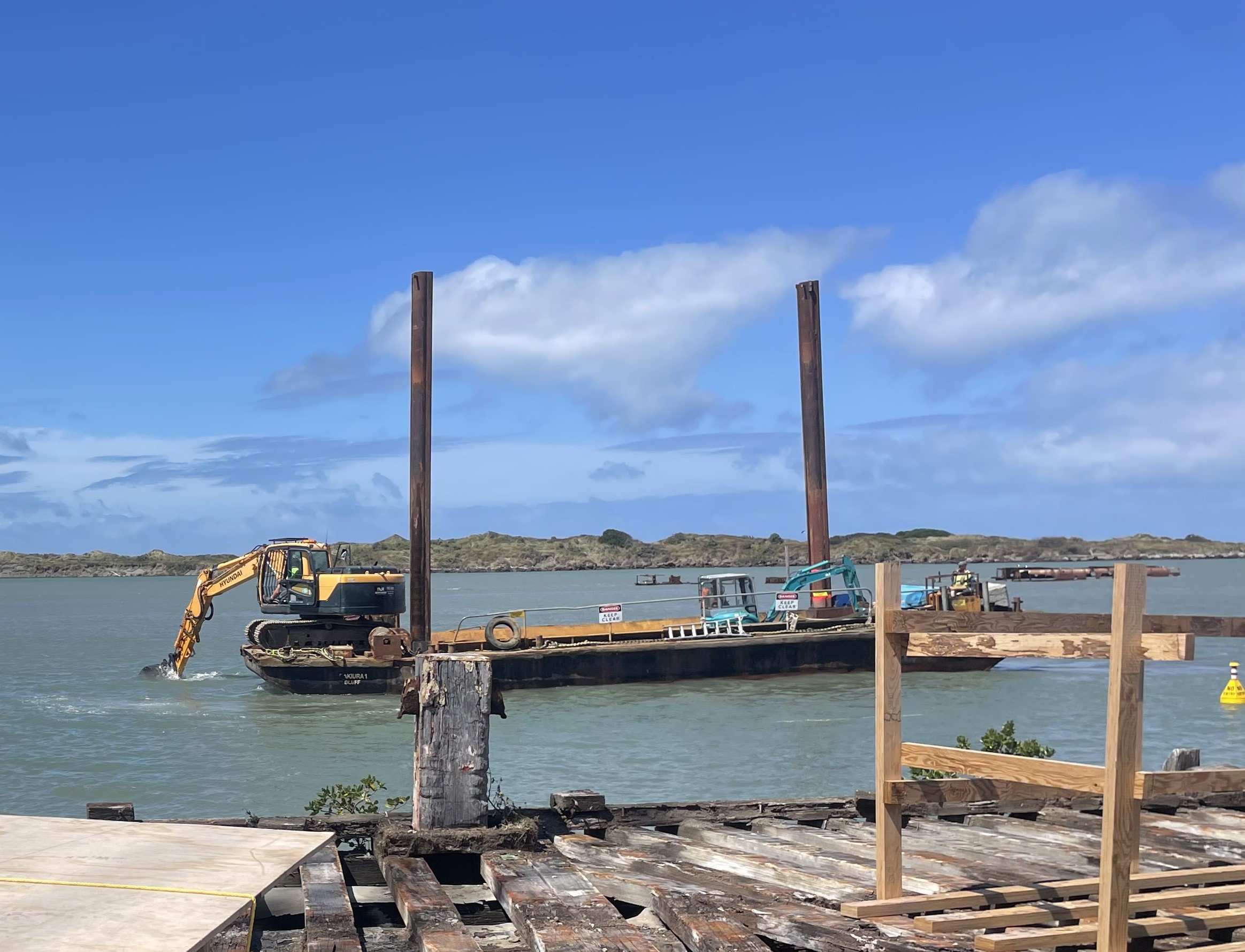Support for dredging consent sought


Whanganui Port, are now seeking a long-term dredging consent as the next major milestone in Te Pūwaha: the Whanganui Port revitalisation project.
This long-term consent will eventually replace the priority dredging consent for the port basin, which has a term of two years and was approved early in 2023. The priority dredging consent currently allows Whanganui Port operators to dredge immediately around the three main wharves and along the Wharf Street boat ramp.
Te Pūwaha is premised on relationships and it is vital that all parts of our community see their value and voice within the project. The proposed dredging application is being approached in this way to ensure all work is done in a way that includes the whole community and recognises the legal status of the Whanganui River under the 2017 Te Awa Tupua (Whanganui River Claims Settlement) Act.
“As with all other work undertaken within the Te Pūwaha project, project partners are committed to upholding Tupua te Kawa and celebrating the connection between our community and Te Awa Tupua,” says Te Pūwaha chairperson Kahureremoa Aki.
“A strong principle relating to the dredging is a commitment to owning our impact. This means being cognisant of the environmental effects, and finding a pathway which enables the Whanganui Port to give back to our awa and improve its health into the future, providing opportunities for abundance and enhancement through greater community connection with the awa, improved governance, education opportunities and ecological restoration.”
Whanganui Port project director, Phil Wardale agrees.
“The dredging activity will be done in balance with owning the ecological impact that dredging creates and our commitment to Te Awa Tupua. As a project we are not shying away from ensuring our contribution to the awa can enhance the wellbeing of Te Awa Tupua.”
Because regular dredging of the Whanganui Port basin has not occurred for a number of years, the sediment has built up, impacting the ecology of the port basin, while also affecting access for commercial operators, boat owners and most importantly, the Whanganui Coastguard.
The long-term dredging consent application, scheduled to be lodged in March 2024, will cover the removal of sediment within the whole Whanganui Port basin and river bar, with spoil to be released back into the main channel of the Whanganui River, immediately downstream of the basin during outbound river flows.
The dredging application will also include a proposal to close the hole in the training wall, to future proof the port basin and reduce the flow of floating debris.
“Long-term dredging will create greater access and opportunities for both recreational and commercial use. The port basin will become a sheltered area for water sports such as paddle boarding and kayaking, while commercial businesses will have fewer limitations, enabling the likes of Q-West Boat Builders to grow their building and maintenance services” says Wardale.
“By returning the depth within the port basin to historical levels, we are securing access to the new marine precinct currently under construction,” he says.
Whanganui Port has also sourced a cutter suction dredge to trial in the basin.
“Our current dredging solution of a barge and excavator has its uses, but it’s unable to shift the amount of sediment we need, at an efficient pace,” he says.
“That is why, starting next week, we will be trialling a new piece of dredging technology.”
“Our procurement process is to look internationally, along with here in New Zealand, and this trial will help inform us of the best type of equipment to use for our specific purpose.”
The trial dredging equipment will be in place for the month of March, and if operating well, into the month of April.
For information on the proposed consent application for long-term dredging please check out our webpage or email portproject@whanganui.govt.nz.


